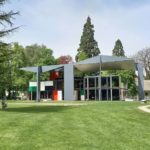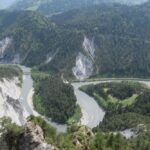As a critical friend of Switzerland, Karl Wolfgang Deutsch (1912-1992) addressed in 1976 the challenges of the 20th and the 21st century for Switzerland.
In the main part of the text, Deutsch deals with the “special case Switzerland”, the so-called – nowadays criticised – “Sonderfall der Schweiz” (special case Switzerland).
The basic question to be asked is why the process of integration in Switzerland happened and why such a singular process affected a particularly constant and particularly close integration amongst the people, who strongly adhered to their languages and the regional and other singularities to such a large extent, exists.
The process has happened over a long period of time with minimal common apparatuses of government, without common police, without common courts, and with a minimum of institutions and binding and enforceable laws. For a long time, the Swiss Confederation did not have a special and separate authority from the Cantons.
The major headings of arguments are geography, the special nature of the peasants and population, the traffic overpasses and the money economy, the ownership of weapons, the heritage of the communal movement, the lack of suppression of the peasants, the technique of federalism, a political culture of mitigation and courage, stagnation and the existence of oligarchies from 1555 to 1770, the formation of capital as a prerequisite for the industrial revolution and mitigation of social contrasts.
Karl Deutsch points to a specific pressure on the competitiveness of key industries. A country that cannot change without losing its essential identity may be in danger of future instability and even lose its existence. The solution to the problem, according to Karl Deutsch, lies in accommodating change while maintaining essential parts of the identity.
The text at hand is a published transcript of the lecture by Deutsch presented in Bern in 1976 in German. The actual text has not been formally published. The text was translated by the political scientist Daniel Frey, who published it in Switzerland in 1976.
(Source and further Information: Switzerland as a paradigmatic case of political integration, Bern, 1976; Wolf Lindner, Federalism. The Case of Switzerland, 2014)






















